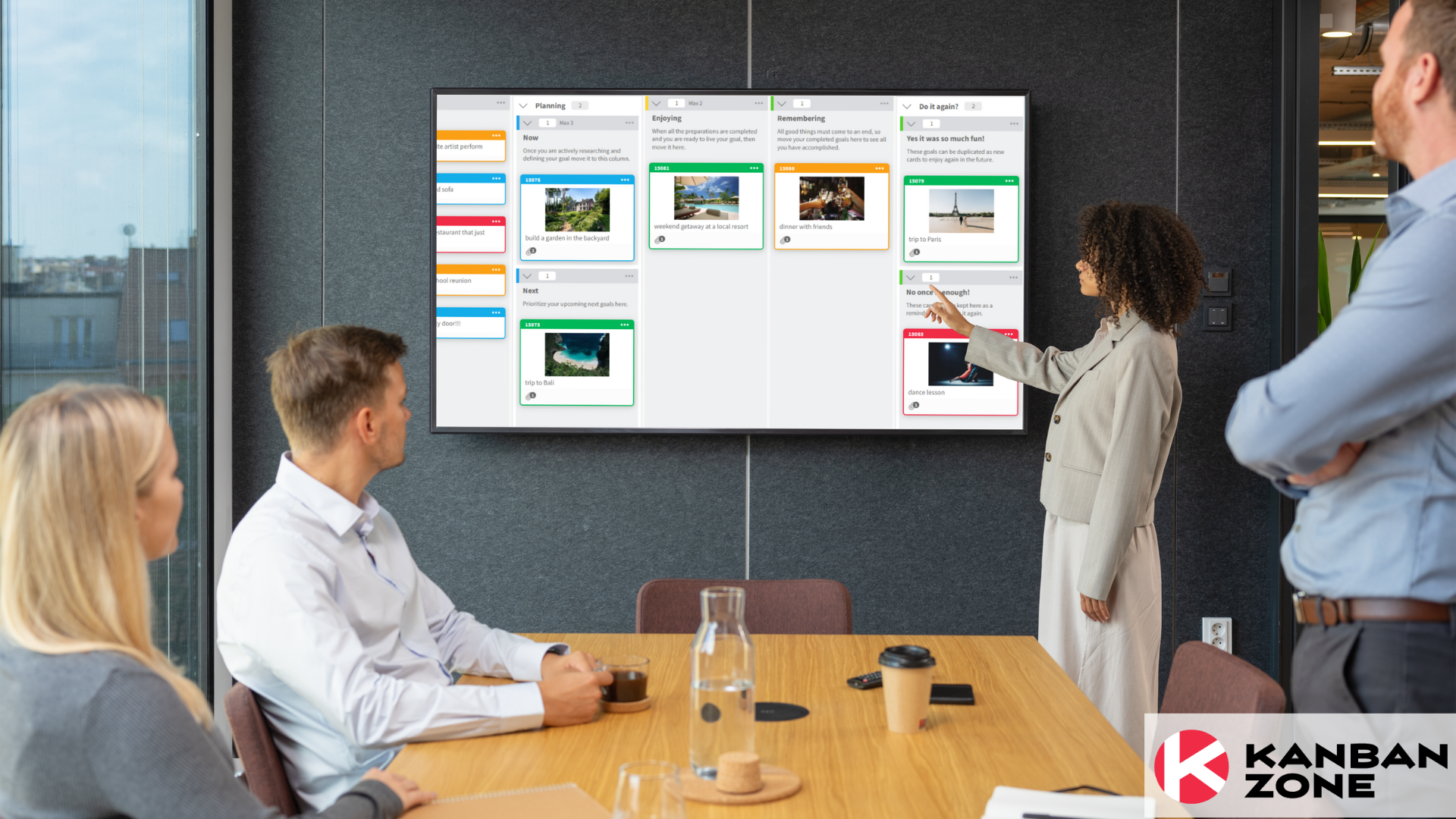
As companies transition to hybrid working models, many leaders are facing numerous challenges in managing hybrid teams. Those challenges can be minor concerns, such as choosing the right communication tools, or major problems like lack of transparency, poor collaboration practices, and micromanaging your remote employees too much. In this article, we’ll tackle the challenges of hybrid working and how you can get the best out of your hybrid team.
Key Takeaways:
- Whether you work from home, some other location or on-site, working in a hybrid team can be challenging for different reasons.
- There are many advantages and challenges of hybrid teams, and this article focuses on how to overcome challenges such as communication, culture and connection, productivity, and much more.
- Once you overcome these challenges, you’ll be able to prosper as a hybrid team, deliver successful products and services, and enjoy all the advantages that hybrid work offers.
Apart from the ones enumerated, strong leadership skills should also be taken into account. Leaders must address the nuances of hybrid work by creating an environment that supports both remote and on-site work, ensuring that every team member feels valued and included.
To navigate these challenges effectively, Kanban Zone offers a robust solution, enabling enhanced collaboration, task management, and transparency tailored to the unique needs of hybrid teams. Developed by a 100% remote team, Kanban Zone understands the intricacies of hybrid work and provides the tools necessary for teams to thrive in this environment.
Understanding Hybrid Work: Why is Managing Hybrid Teams so Challenging?
Hybrid work is currently one of the most popular work models because it blends the in-office workforce with a large talent pool that remote work offers. However, given that hybrid work has only gained popularity recently, majority of managers are struggling with handling hybrid teams.
There are many reasons why managing hybrid team members can be challenging. Many employees that came from a fully remote work model to a hybrid work model expect a certain level of freedom. While a hybrid team still offers a lot of flexibility, it’s worth noting that certain levels of freedom are not always possible.
If you read our article on managing hybrid teams, then you probably know that there are several types of hybrid teams. That being said, not all models may work with your team setup, which can create conflicts and gaps between the team members.
What can you do to find the challenges your hybrid team faces and overcome them? Continue reading to learn about the key challenges of hybrid working and how to overcome them.
7 Challenges of Hybrid Working & How to Overcome Them
In this section, we’ll discuss the most sensitive challenges of hybrid teams and working in general and offer actionable solutions to these challenges. Once you’re done reading this article, you’ll be able to help your team in the best way possible.
1. Communication Limitations
When a team operates from multiple locations, it’s extremely difficult to manage the communication protocols effectively. This becomes extremely important when a hybrid workforce utilizes multiple channels to exchange information, like ticketing systems, team meetings and general communication.
Many companies that transitioned to remote or hybrid work models know the importance of having a straightforward workplace communication channel. It is normal to use 2-3 communication channels like Slack or Microsoft Teams, Zoom, and collaboration tools.
But, the original meaning of information can get lost when it’s communicated on multiple channels separately. More importantly, when one part of the team is distributed and another part of the team is co-located, it’s almost impossible to convey the communication within an office online.
How to Address This Challenge?
- Keep the number of tools you use for communication with your team to a minimum. Don’t invest in too many tools but keep it at 1-3 tools max.
- Encourage your office-native employees to connect with team members who work remotely.
- Keep most of the communication within collaborative tools where it’s accessible to everyone.
- Involve your remote employees in meetings that take place on-site and ensure that everyone can be present without communication barriers.
2. Culture and Connection
As opposed to remote work, hybrid work aims to bring people together and reconnect them. However, that’s not without its challenges. As many companies that embrace both remote and on-site work propel themselves in the industry, it’s still quite challenging to juggle the different cultures that reside in it.
According to a survey in Gartner, 90% of questioned participants “believe that to succeed in today’s work environment, leaders must focus on the human aspect of leadership.”
What does it mean for managers and leaders? Their team members need to see that they’re human too, and that they are capable of connection and empathy. Additionally, there’s a need to support multiple cultures in the hybrid team and make them feel valid.
How to Address This Challenge?
- Host themed work days where employees from different countries and cultures can share a bit of their spirit with them.
- Make sure that every employee, be it on-site or remote, feels valid and appreciated. Make sure they have days off during their respective holidays and give them a sense of belonging.
- Host team building and brainstorming sessions where you prioritize empathy and connection.
3. Collaboration & Team Cohesion
In hybrid teams, collaboration and team cohesion face significant challenges. These challenges become amplified thanks to technology dependence. Hybrid teams have to combine remote and in-office work and often rely on digital communication and collaboration tools.
Even though this technological backbone enables teams to achieve much more, it also hinders productivity, collaboration, and much more. More importantly, it can introduce barriers to seamless interaction and the organic development of team relationships.
It’s also worth mentioning that in digital formats, we often lose the nuances of non-verbal communication, which leads to misunderstandings or feelings of isolation among team members.
How to Address This Challenge?
- You can overcome hybrid challenges regarding communication by introducing user-friendly collaboration tools accessible to all skill levels. Additionally, identify which collaboration tools will help your team thrive, and which will hinder their productivity.
- Provide regular tailored training on digital tools for employees to work with ease.
- Encourage open dialogues about challenges your team may face during Sprint and promote a culture of inclusivity. Talk about their feelings, and make their concerns heard.
- Schedule regular virtual team-building activities to strengthen relationships and ensure each team member understands the takeaways after meetings while promoting transparency.
- Team members can interact through collaborative tools like Kanban Zone and take care of their internal work challenges.
4. Productivity
In hybrid teams, getting work done well isn’t about where you are but what you do. Since everyone’s home (or anywhere else) setup and work style is different, it’s tough for companies to make rules that fit everyone.
Smart companies let each small team decide how they work best, whether at home or in the office. This way, all kinds of teams can do their best work in their way. It’s all about giving teams the freedom to figure out what works for them.
How to Address This Challenge?
- In hybrid teams where parts of a team work remotely it’s important to establish work policies tailored to individual team needs, while propelling the overall team productivity to new heights.
- Encourage teams to set their own goals and work routines, while remaining aligned with already-existing policies.
- Provide collaboration tools like Kanban Zone and other resources that support your work culture, as well as various work environments.
- Regularly review and adjust policies based on team feedback.
- If your remote team members struggle with productivity working at home but are located far from the office, offer a subscription to a coworking space that will open more options for productivity.
- Productive working from home is still possible, but you’ll need to create a sustainable routine to help you navigate through these challenges.
5. Effectiveness and Efficiency
Effectiveness and efficiency are some of the most common challenges of hybrid working, as well as remote working. Your team members may struggle with maintaining their efficiency and energy, which can also lead to burnout.
That’s why it’s important to establish clear boundaries between work and free time. When you’re working in a hybrid setup, figuring out how to use your time and energy wisely is tricky.
You’ve got so much to do, it’s hard to choose what to tackle first for the best results and that good feeling of getting things done. It’s all about finding the right balance to make sure you’re working on the most important stuff without wearing yourself out.
How to Address This Challenge?
- Prioritize tasks based on impact and urgency.
- Set clear, achievable daily and weekly goals.
- Use time management tools to plan and track work.
- Regularly assess and adjust priorities as needed as that’ll help you navigate other challenges in a hybrid work culture.
6. Adapting to New Work Environment
Whether you spent most of your career working on-site or the comfort of your safe harbor, transitioning to hybrid work model can be stressful. It takes some time to adapt to this change and adopt new practices.
At first your team may find it difficult, whether they are transitioning fully from the on-site work model or remote. However, it’s important to show compassion and understanding as they’re adapting to an entirely new style of work. A little understanding goes a long way in making this transition smoother.
How to Address This Challenge
- Offer training sessions on tools and strategies for hybrid working.
- Encourage open communication about challenges and adjustments needed.
- Show patience and understanding as everyone adapts at their own pace.
- Be flexible. Know that things won’t always go the way you want them to, and that’s okay. The flexibility of working from home might be exactly what you need, but it’s not always what will benefit the company if you work a role that requires physical presence.
7. Motivation
Many experts call the hybrid work model the future of work but they don’t talk much about how hard it is to maintain motivation in a hybrid workspace. When other challenges like lack of communication and transparency add up, it becomes extremely difficult to keep motivation on a high level.
If you’re working in a hybrid mode, you’ve probably come across times when you neither felt like logging in from your home computer, nor commuting in the office. Perhaps you feel like you’re doing too much work and your efforts are not rewarded. Finally, you may have preferred the fully remote work arrangement and find going to the office absurd.
Many people feel like that about hybrid work arrangements, but that doesn’t mean that this challenge is without a solution.
How to Address This Challenge
- Recognize and reward efforts and achievements, no matter where work is done.
- Offer flexibility in work locations to accommodate personal preferences.
- Prepare for the change that’s about to come and embrace it.
- Seek motivation outside of work. Your life shouldn’t only revolve around your work.
- Foster a sense of community through regular virtual and in-person team events.
Work-life Balance and Work Challenges
Hybrid teams may struggle with maintaining work-life balance upon transitioning to a hybrid work model. Let’s address these challenges.
Addressing Work-life Balance in a Hybrid Work Environment
In a hybrid work environment, ensuring there’s a clear boundary between professional and personal life can be tedious, but a life-changing boundary.
The flexibility of location can blur these lines, which can lead to overworking and burnout. More importantly, some employees may struggle with disconnecting, which can affect overall well-being and job satisfaction.
There are several ways to fix this such as:
- Setting and respecting clear work hours. For example, your hybrid work policy may highlight that work hours are between 8 AM and 6 PM, and within that timeframe, your employees can choose to work for 6, 8, or however many hours they need to complete their daily work.
- If your employees work in an office, you should encourage breaks and time off. It can be just a coffee or a tea break, a little chat break, or anything else that can make their day easier.
- Provide resources for mental health. Many companies include a mental health package in their benefits package such as apps like BetterHelp or Calm, an app for addressing anxiety and insomnia.
- Implement a “no email” policy after work hours. Even though you can always turn your notifications off, it’s still convenient not to bother people with ghost tasks after work hours.
- Lastly, offer workshops on time and work management that can help your employees adjust to hybrid workstyle sooner.
Navigating Work Challenges in a Hybrid Model
Navigating the complexities of a hybrid work model requires a foundation of transparency, open communication, and trust. Promoting clear expectations around work hours, availability, and responsibilities helps in building a cohesive team dynamic, despite the physical distances.
Encourage regular check-ins, as well as feedback sessions because they’ll help identify your shortcomings, and get feedback as to what to do better. This will promote a culture of inclusivity and continuous improvement.
Leadership must lead by example, openly discussing challenges and successes, to maintain a sense of unity and shared purpose.
Ultimately, embracing flexibility and understanding individual needs will drive success in the hybrid work environment, ensuring that every team member feels valued and connected.
Leading a Successful Hybrid Team
If you want your hybrid team to work effectively, we hope that you’ll try to implement the tips we mentioned in the earlier sections of this article. Leaders should provide their team with the support and guidance that they need while going through the transition, and while your team members won’t like this abrupt shift immediately, working together will help you overcome all the challenges you come across.
1. Creating Boundaries Between Work and Personal Life
If you want to maintain a work-life balance in your team and prevent burnout, you must create boundaries in a hybrid work environment. According to a 2021 report from Indeed, 38% of remote workers experience burnout because they’re pressured by the management to work extra hours.
That’s why it’s important to set clear expectations for work hours and availability. Additionally, it’s important to help employees create dedicated workspaces, and take time off once the work hours end.
Organizations can support their employees by offering guidance on creating effective routines and by promoting a culture that can prioritize well-being and recognize the importance of downtime.
2. Implementing Work Policies for Hybrid Work Schedules
Implementing work policies for hybrid work schedules requires careful consideration to balance flexibility with the needs of the organization.
Policies should address which roles are eligible for hybrid work, the expected distribution between remote and in-office days, and how performance will be evaluated in this new context.
Clear guidelines help ensure fairness and transparency, while also accommodating the varying preferences and life circumstances of team members. Regularly reviewing and updating these policies ensures they remain relevant and supportive of both individual and organizational goals.
3. Building Flexibility and Collaboration Among Team Members
Flexibility and collaborative behavior among team members in a hybrid setup will help drive innovation and productivity. That’s why you need to create both on-site and off-site environments where team members feel empowered to make decisions about how, when and where they work best.
Encouraging the use of collaborative tools and fostering a culture of open communication enhances teamwork and allows for the seamless integration of ideas, regardless of physical location.
Celebrating successes and learning from challenges together strengthens team bonds and reinforces a collective commitment to achieving shared objectives.
Final Word
Navigating hybrid work challenges demands innovative solutions, and Kanban Zone, developed by a 100% remote team that mastered flexible working, offers just that. Its platform enhances collaboration, task management, and transparency, tailored to the unique needs of hybrid teams.
Experience how Kanban Zone can transform your work dynamics and help you manage a hybrid workplace without hassle. Try it for free and see the opportunities for your team members by tracking their productivity and efficiency.
Learn to Work Smarter, Not Harder!
Get our top articles weekly.
Table Of Contents
Discover many more posts…








